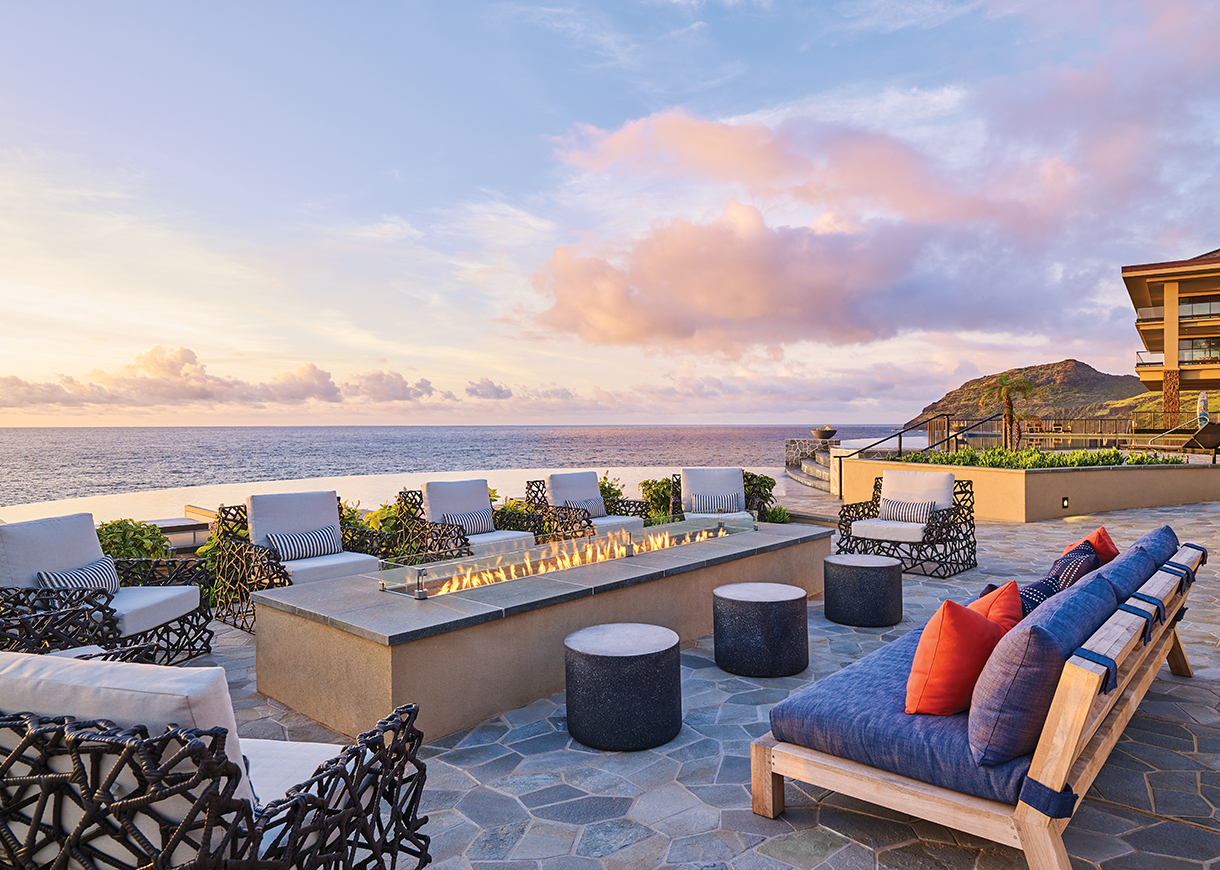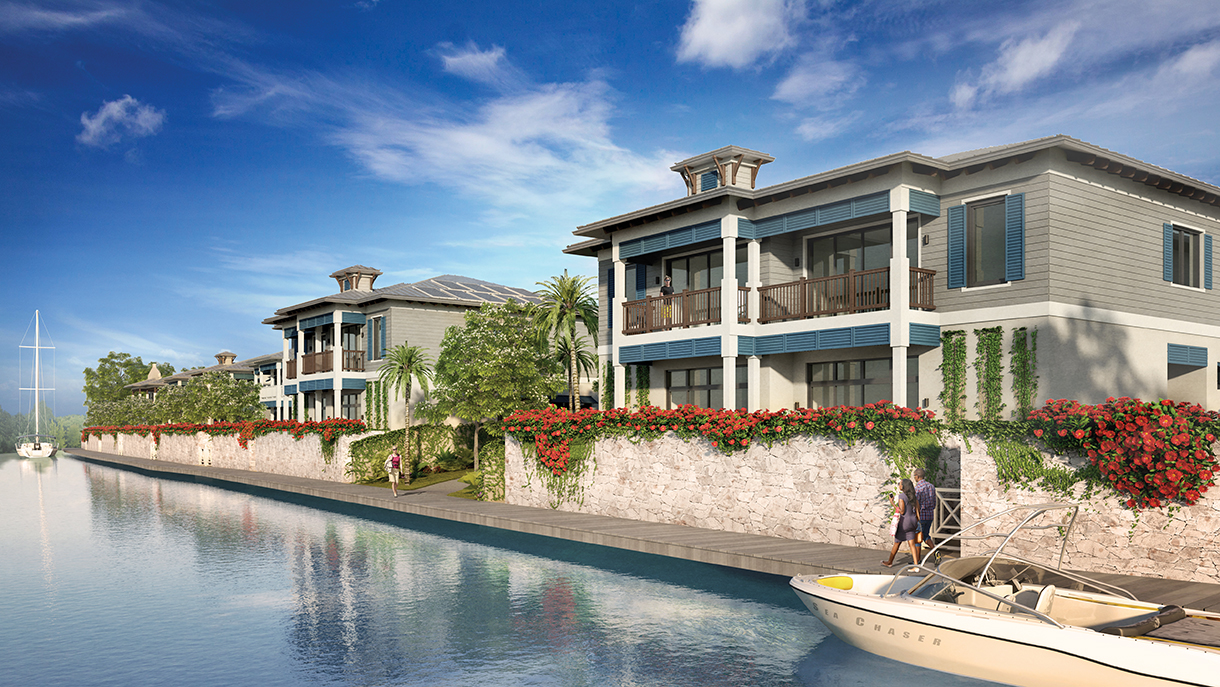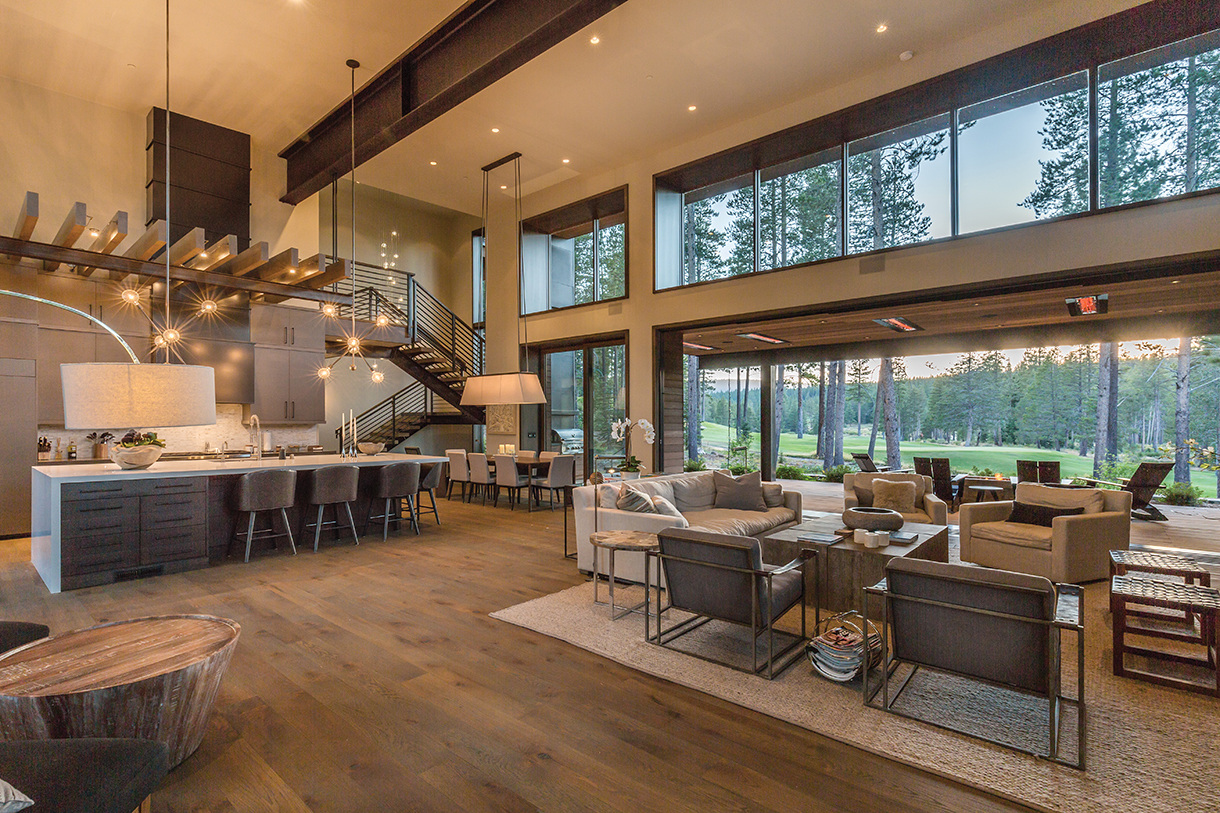
Homes on the Range
Buyers want to be out of the big cities, but still within reach of urban conveniences.
COVID-19 has changed how and why people are buying real estate,” says Craig Hogan, vice president of luxury, Coldwell Banker Real Estate. As many companies embrace working from home, people are able to untether from high-density cities. Cooped-up urbanites are looking for fresh air, open spaces, and homes where they could comfortably “camp out” for months—and possibly forever.
Small towns and resort areas a short drive (two hours or less) from big cities like New York, Chicago, and Los Angeles are becoming real estate hot spots. Close enough to be accessible, but far enough away to give peace of mind. “The Hamptons are booming … so is Long Island’s Gold Coast, the Southern Adirondacks, the upper Hudson Valley, Vermont, and Connecticut,” he says. On the West Coast, Hogan is seeing a migration to Tahoe, coastal hamlets like Friday Harbor and Westport (Washington), and the smaller villages in California and Oregon wine country.
Small cities that were not previously on people’s radar (including Boise, Idaho; Glen Arbor, Michigan; Bozeman, Montana; and Plano, Texas) are getting a second look—at all price points. “They have the yards … with room for a pool or tennis court … and neighborhoods that everyone is craving,” says Hogan. In addition, they offer less density and “a great lifestyle” with locally owned restaurants, microbreweries, and easy access to window-clear lakes, green space, or mountain parks.
As our homes have become everything to us—school, workplace, gym, summer camp—the demand for larger houses with abundant outdoor space (even compounds of several homes) has skyrocketed. With the possibility that “shelter in place” could happen again, working couples want his-and-hers offices and children need room to roam. Families want to shelter with parents, grandparents, and like-minded friends. “We have a 54-acre family compound—Stowe Away Estate—listed in Vermont for $6.75 million,” says Hogan. “It is two minutes from Stowe, but completely private … completely hidden … completely self-sufficient.” coldwellbanker.com

Located in the 450-acre Hokuala resort community on the Pacific coast, Timbers Kauai combines the slowed-down, low-stress Hawaiian lifestyle with Timbers’ signature amenities and experiences: deep-sea fishing and sunset sails along the Napali Coast. Responding to the current climate, the family-friendly resort recently released more whole ownership residences. “There is more demand by families looking for residential resort destinations,” says Debbie Edgerton, senior sales executive. The common thread? People in big cities—Los Angeles, San Francisco, New York—are working remotely and their children are distance learning. “Our buyers are seeking out private homes in leisure destinations that not only offer ideal weather conditions year-round but also expansive spaces that allow them to interact with and enjoy their environment,” she adds. High-speed internet access allows parents to work from their private home offices—opening onto their lanais and overlooking the ocean—while students can augment their remote learning by taking field trips to Timbers’ organic farm, going on guided rainforest hikes, and snorkeling to study hundreds of species of tropical fish and the healthy coral reefs that surround the island. Other whole-ownership opportunities through Timbers include Casali di Casole (Tuscany, Italy) and One Steamboat Place (Steamboat, Colorado). From $2.89 million to $7.9 million; timberskauai.com

High-net-worth buyers are eyeing homes in the Caribbean to ride out the possibility of a winter quarantine. Warm weather, privacy, low rates of COVID-19, and a safe investment asset are all driving the demand. “We’ve seen a significant increase in the number of people looking to relocate here permanently,” says Sue Nickason, vice president of real estate marketing and sales at Provenance Properties, the Cayman Islands affiliate of Christie’s International Real Estate. According to Nickason, buyers are looking for properties in safe, low-density areas. They want places that have a modern infrastructure and are easy to access (by private jet from anywhere in the world to Owen Roberts International Airport on Grand Cayman Island). Another attraction is the Cayman Islands’ residency through investment in real estate program. “Interest among globally mobile individuals has increased due to the COVID-19 pandemic,” she says, “because they appreciate the importance of having residency to cross borders that are otherwise closed.” Luxury beachfront condos typically start at $1 million; provenanceproperties.com.

“I have sold more real estate in the past few months than I did all of last year,” says Breck Overall of Overall & Hamilton Group, Sierra Sotheby’s International Realty, which covers both the California and Nevada sides of Lake Tahoe, as well as Truckee and Reno.
“The younger demographic that’s in tech in the Silicon Valley see that they can buy two to three times more house in Tahoe,” he says, “and be closer to hiking and mountain biking trails and to skiing in winter.”
Some recent buyers are not fully relocating; they are keeping their city apartments. “They have been vacationing in Tahoe for years and are finally pulling the trigger on a ‘temporary primary residence,’” says Overall. Some people are asking about rentability so “they can justify the purchase knowing they have a bit of an exit strategy.”
Tahoe’s spillover market is equally strong with buyers looking for ranch-type properties in the Carson Valley—including working cattle ranches—and substantial acreages near the small towns of Gardnerville and Sparks. Demand continues to outpace supply in every neighborhood and at every price point. “We are seeing multiple offers and a very competitive market,” says Overall. “Some buyers don’t want to go through that; they ask us for the ‘get it done’ price.” From $1 million to $20 million; overallhamiltongroup.com or sothebysrealty.com




